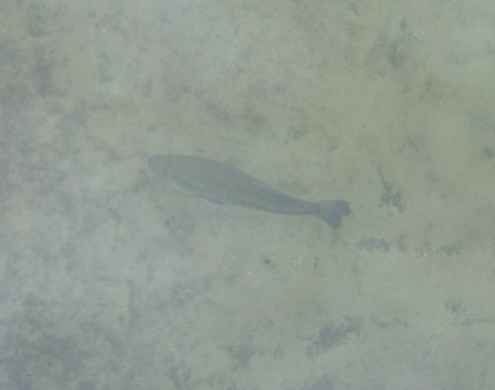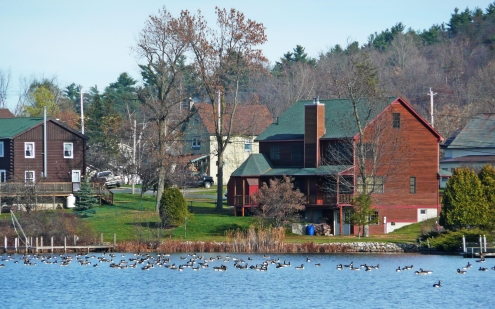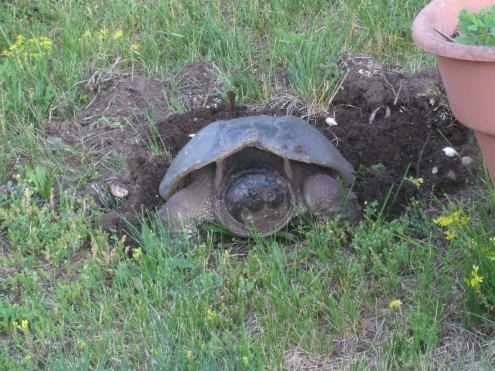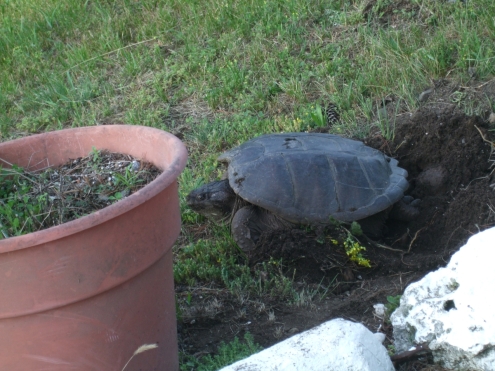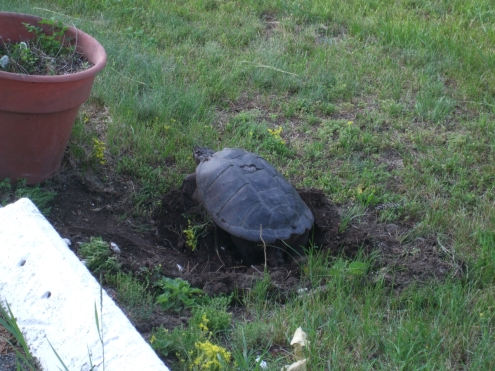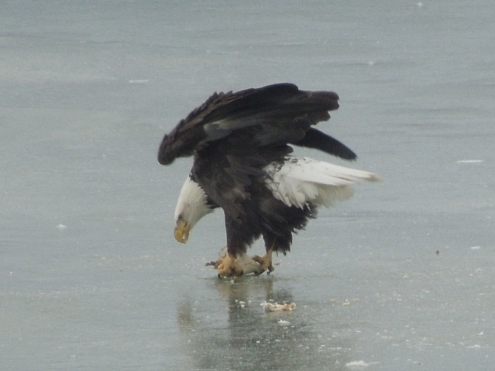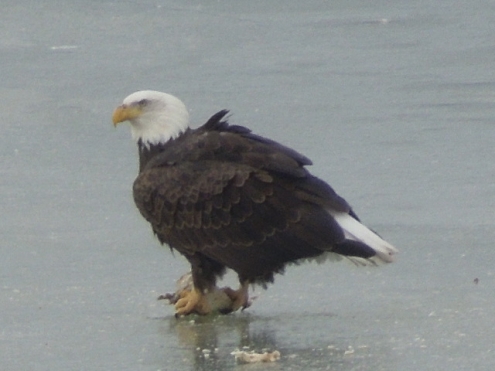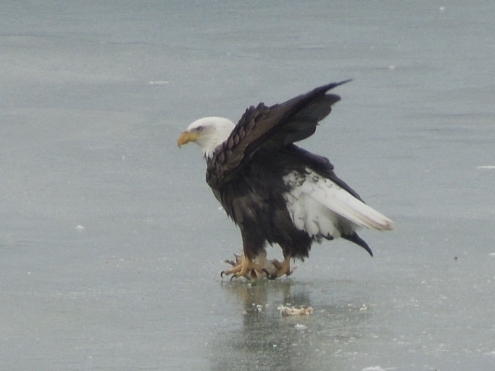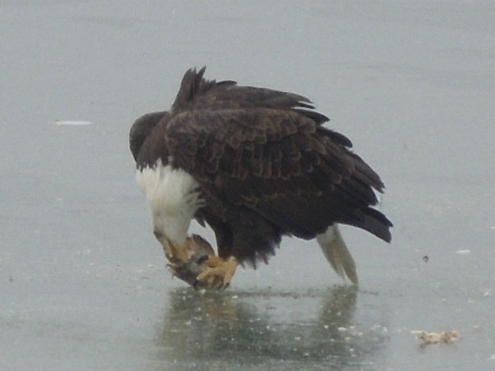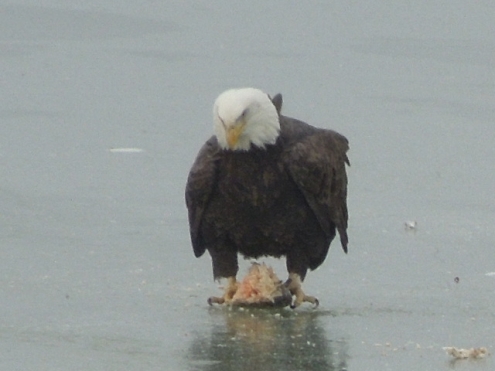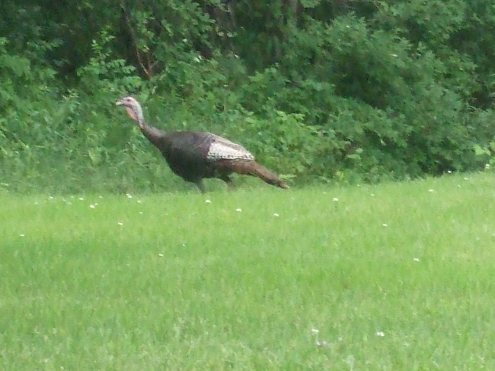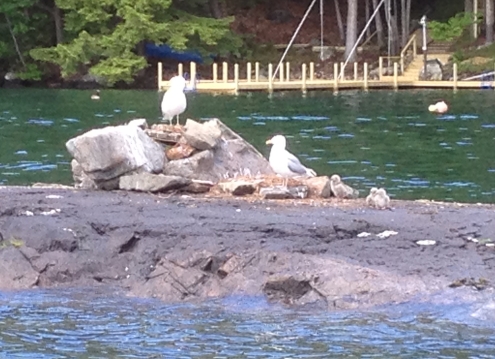
Looking out to Lake George from the Norowal Cabin Owners’ Association property in Bolton.
The Lake George Association has partnered with the Norowal Cabin Owners’ Association to install a native plant buffer along a section of the association’s shoreline along the Lake. In addition to wanting to buffer the shoreline to help protect the Lake from any potential stormwater runoff in the area, the association is also hoping that the buffer will help keep Canada geese off their property.
“We were very excited to partner with the homeowner’s association on this project. Complaints about Canada geese are nothing new around the Lake. In fact, earlier this summer we partnered with USDA/APHIS Wildlife Services to begin a Canada goose survey of the Lake as a first step in developing a management plan,” said Emily DeBolt, LGA’s Outreach Coordinator. “However, there are steps that property owners can take on their own as well,” said DeBolt.

A view in from the lake.
One such step is maintaining – or re-creating – a more natural shoreline. When geese have a direct line from the Lake to tasty, green grass, it is like an open invitation for them. “We can’t really blame the geese,” said DeBolt. “I know it isn’t what people want to hear, but we have created an ideal scenario for them and they are just obliging.”
Luckily, the homeowners at the Norowal Cabin Owners’ Association listened to what DeBolt had to say. The shoreline buffer installed at the Norowal Homeowner’s Association property will hopefully help with the goose problem come spring. By then, the native perennials installed this fall will be getting established, and will be tall enough to deter the geese, but not so tall as to impede the view of the Lake for the homeowners that use the property. “We were thrilled to work with the LGA staff to make this project happen,’ said Cheryl Lamb, Association member. “We have wanted to address our shoreline area for a while now, but we just weren’t sure where to begin. The LGA’s expertise made it possible. We can’t thank them enough for all their help.”

Native blue flag iris is planted on the left. Invasive yellow iris appears on the right.
Another important part of this project was first removing a large section of yellow iris that had taken hold along the shoreline. Yellow iris is an extremely invasive plant that is found along the shorelines of the Lake. The seeds float, so the water carries them, allowing the plant to pop up anywhere the wind takes it. “What was interesting about this yellow iris was that on the same section of shoreline there was also the native blue flag iris as well just a few feet away. You could really tell the difference between the two in terms of size when they were next to each other like that. We were sure to remove the invasive yellow iris but keep the native blue flag iris as part of the new buffer,” said DeBolt. “We will be sure to monitor the planting next year to see if any bits of yellow iris pop back up as well. We did our best to remove it all, but it is always a good idea to monitor an area for a few years just to make sure you got it all.”
“This buffer had many different components to it that will benefit the Lake. We were able to not only remove invasive species, but also then plant native species to both better stabilize the shoreline to prevent erosion and provide a buffer before stormwater runoff reaches the lake. And as if all that wasn’t enough, it will also discourage geese from using the area,” said DeBolt. “We really wish everyone would consider buffering their shoreline with native plants. It’s not only an investment in your property, but it’s also an investment in the Lake. We can’t think of a better win-win than that.”

